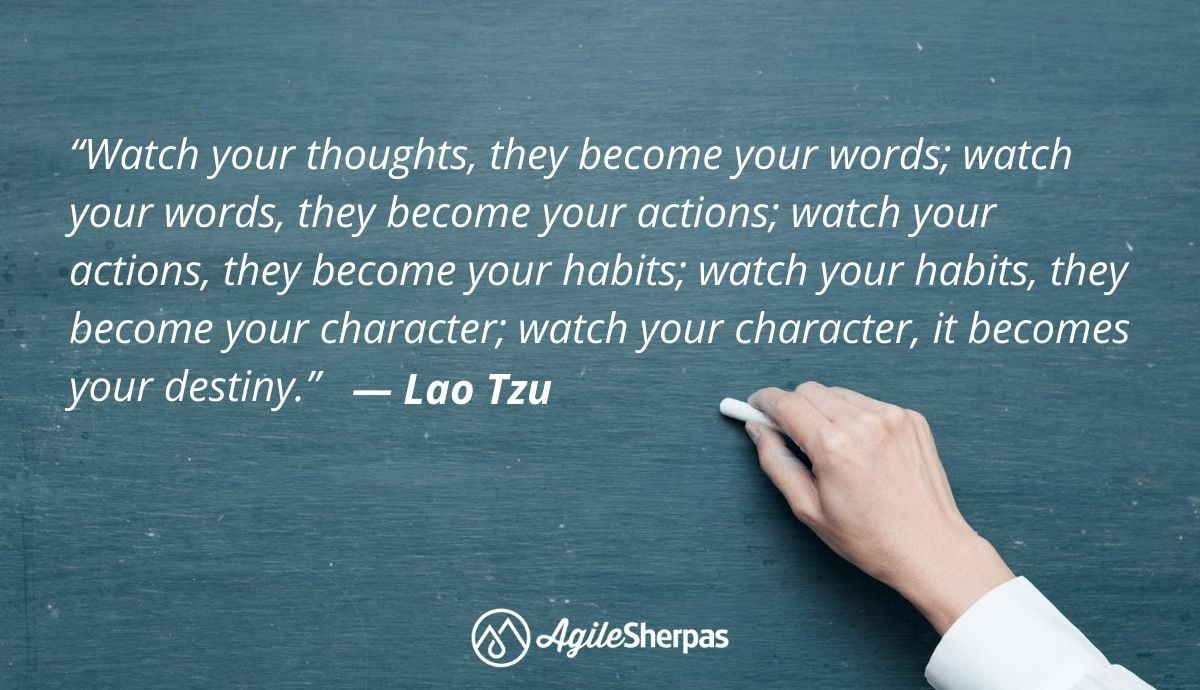-
- marketing agility
- Teams
- Organizations
- Education
- enterprise
- Articles
- Individuals
- Transformation
- Solution
- Leadership
- Getting Started
- business agility
- agile management
- going agile
- Frameworks
- agile mindset
- Agile Marketing Tools
- agile marketing journey
- organizational alignment
- Agile Marketers
- People
- Selection
- (Featured Posts)
- strategy
- agile journey
- Metrics and Data
- Kanban
- Resources
- Why Agile Marketing
- agile project management
- self-managing team
- Meetings
- agile adoption
- scaled agile marketing
- tactics
- Scrum
- scaled agile
- AI
- agile marketing training
- agile takeaways
- Agile Meetings
- agile coach
- enterprise marketing agility
- Agile Leadership
- Scrumban
- state of agile marketing
- team empowerment
- agile marketing mindset
- agile marketing planning
- agile plan
- Individual
- Intermediate
- Team
- Videos
- kanban board
- Agile Marketing Terms
- agile marketing
- agile transformation
- traditional marketing
- FAQ
- agile teams
- Agile Marketing Glossary
- CoE
- agile
- agile marketer
- agile marketing case study
- agile marketing coaching
- agile marketing leaders
- agile marketing methodologies
- agile marketing metrics
- agile pilot
- agile sales
- agile team
- agile work breakdown
- cycle time
- employee satisfaction
- marketing value stream
- marketing-analytics
- remote teams
- sprints
- throughput
- work breakdown structure
- News
- Scrumban
- agile brand
- agile marketing books
- agile marketing pilot
- agile marketing transformation
- agile review process
- agile team charter
- cost of delay
- hybrid framework
- pdca
- remote working
- scrum master
- stable agile teams
- startups
- team charter
- team morale
- user story
- value stream mapping
- visual workflow

Words matter. How we communicate makes the link between our purpose and the results we deliver. Communication lies at the very heart of Agile Marketing and business agility. As a result, our Agile endeavors will thrive or falter accordingly.
The thing about communication is that we tend to focus on the communicator, rather than the audience. The word ‘communication’ elicits images of writing, talking, presenting – the initiating part only. And yet, communication is a two-part process – it’s like two-part epoxy adhesive that doesn’t work unless you have both the resin and the hardener.
Unless you have a speaker and a listener, a writer, and a reader, communication is worthless. We need to match our prowess in communication with the complementary skill of listening. This is referred to as ‘active’ listening as a reminder that we need to do it intentionally.
Our world is full of communication: people chatting to us, the relentless flow of new information to our email inbox, meetings, phone calls, television, WhatsApp, and more. The risk is that we let it all wash over us so that the skill of listening and the value that can generate becomes undervalued or overlooked.
Core of Collaboration
The original Manifesto for Agile Software Development advised valuing ‘Individuals and interactions over processes and tools’. Agile Marketing leaders need to be able to have effective conversations; with their teams, with their marketing agencies, with their specialist suppliers, and with their stakeholders. These conversations should be genuinely two-way, covering both formal and informal contexts, and with an emphasis on their quality not just their frequency.

Quality communication is critical for effective collaboration in marketing. Without it, true cross-functionality is difficult and attempted collaboration can create more problems than it solves.
“Argue without being argumentative and disagree without being disagreeable.”
- Doug Fisher, Educator
If agilists are going to encourage great ideas to surface, from anywhere in the organization, and foster psychological safety for teams to share meaningful feedback, then understanding how to frame great collaborative conversations needs to be right at the top of a leader’s personal development ‘to-do’ list!
Many of the techniques adopted by Agile Marketing teams aim to improve communication. A few great examples include:
- Daily standups where team members share progress and obstacles.
- Kanban boards that communicate the status of activities and visualize workflow in a transparent (real not ideal!) way.
- Retrospectives where ways of working are reviewed and opportunities to improve are identified.
The value of these practices diminishes if there is little curiosity and interest on the part of the audience and if there is insufficient focus and attention on ‘listening to understand’.
Relevance and Value
When marketing leaders communicate with their teams and their stakeholders, they can tap into the skills they use every day to communicate with their target audiences. They know that there’s no sustainable value to provide by pursuing an inward-facing agenda or an internal perspective. Agile marketers put the customer at the heart of their activity. They’re looking to serve not to sell, and they take steps to get closer to the customer to gather the feedback that will influence future development.

By closely listening to a target audience, marketers can better understand which forms of communication, and which topics, bring the most value.
By closely listening to their teams, Agile marketing leaders can better understand the support and interventions that they need to make to develop talent and empower people to reach their full potential. Only by paying attention can we know what is going to be timely and relevant to their challenges.
Responsive Communication
It can be helpful to think about communication in terms of the Agile process itself. By communicating in small chunks, with feedback loops, we can pause to check whether our audience understands us. Then, we can identify how to improve, and modify our messages to meet the need highlighted through the response we’re getting.
The best communicators will happily divert from a planned presentation if it’s clear that their message is simply not hitting the mark. Their heightened awareness enables them to adapt and respond to the overt and subliminal feedback from their audience. There’s a limit to the upfront planning you can do for a conversation! You need to respond to what the audience hears, sees, and notices. You can only do that by listening with intent.
Questions are Powerful
Many of us are quick to try and justify our own expertise and our worth by jumping in too fast with our own judgment or opinion. We may overlook the impact this has in shutting down the opportunity for others to share their own view, and the benefit we are losing by not spending more time asking questions to understand the meaning of what’s been offered to us.

Whilst Agile Marketing leaders value answers, they value questions more. Questions can surface untold truths, reveal new thinking, and lead to genuine innovation and individual growth. In the AgileSherpas Agile Marketing Leadership accreditation course, we include some active experience with Powerful Questions. This is a very practical and interactive course, relating all the principles it covers to the day-to-day challenges you face. One of the tools included is a Powerful Questions worksheet. This is one you’ll want to keep to hand, to guide those difficult conversations towards the results you most need.
Active Listening in Practice
Active listening is demanding for the listener. It requires you to focus your full attention on the speaker. You can learn so much from details such as their tone of voice or body language. For instance, a flatter tone may indicate the speaker is having to think very hard about unfamiliar material. On the other hand, an animated tone may suggest enthusiasm and motivation. Don't assume anything. Active listening is about checking our interpretation by observing feedback as the communication progresses.
If someone feels acknowledged and responded to, they will give back, and a reciprocal flow of information will follow to benefit both parties. If they think your thoughts are drifting elsewhere, they are unlikely to share what really matters to them. This has strong implications for working with stakeholders, engaging team members, and aligning commitment and effort around marketing campaigns or transformation initiatives. Observation and interest are key to success at all levels of business activity.
5 active listening tips
Reflect back what you’ve heard – people need evidence of listening, and confirmation they’ve been understood. This offers the opportunity to identify assumptions and correct misconceptions.
Encourage – communicators assess whether their audience is giving their full attention. In spoken conversation, we should avoid long silences which may imply we’ve been distracted or that our interest is waning. Your listening can be interspersed with “Yes, I see”, or “Go on” or “Tell me more about” to show you are still focused on what is being said. Giving back this acknowledgment also shows we feel the communication is useful. For the written word, we can use social media to acknowledge, validate, and offer our part of the conversation.
Clarify and extend – Confirming what someone is saying and then illustrating understanding with an example, or connecting to a relevant concept, will extend the value for both parties.
Open questions – use What, Where, How and When freely, but be more careful about Why. “Why?” can come across as judgemental and suggest that something perhaps shouldn’t have happened, so it may appear critical.
Summarise – this doesn’t only have to be at the end of a conversation but is very powerful in giving the speaker a chance to hear what you’ve understood. This has another benefit too. By speaking the words out loud, it makes it more memorable and can lead to further clarification for both parties.
Summary

Active listening is a critical part of communication. It’s more important than just getting out there and saying what we want to say, writing what we want to write, and producing content to spread far and wide. Marketers, transformation and change specialists, and leaders across all disciplines, are likely to falter in pursuit of their goals if they don’t intentionally listen and focus on the feedback they are receiving. Communication is a core leadership skill that has the power to build – and also to destroy if it’s carelessly implemented.
As marketing leaders, the greatest honor we can offer people is to listen with the intention to understand, to offer our full attention, and to focus on the feedback loops on which the productivity and success of the Agile process relies.
You could join Pam Ashby on the next Agile Marketing Leadership course.
Topics discussed
Improve your Marketing Ops every week
Subscribe to our blog to get insights sent directly to your inbox.


